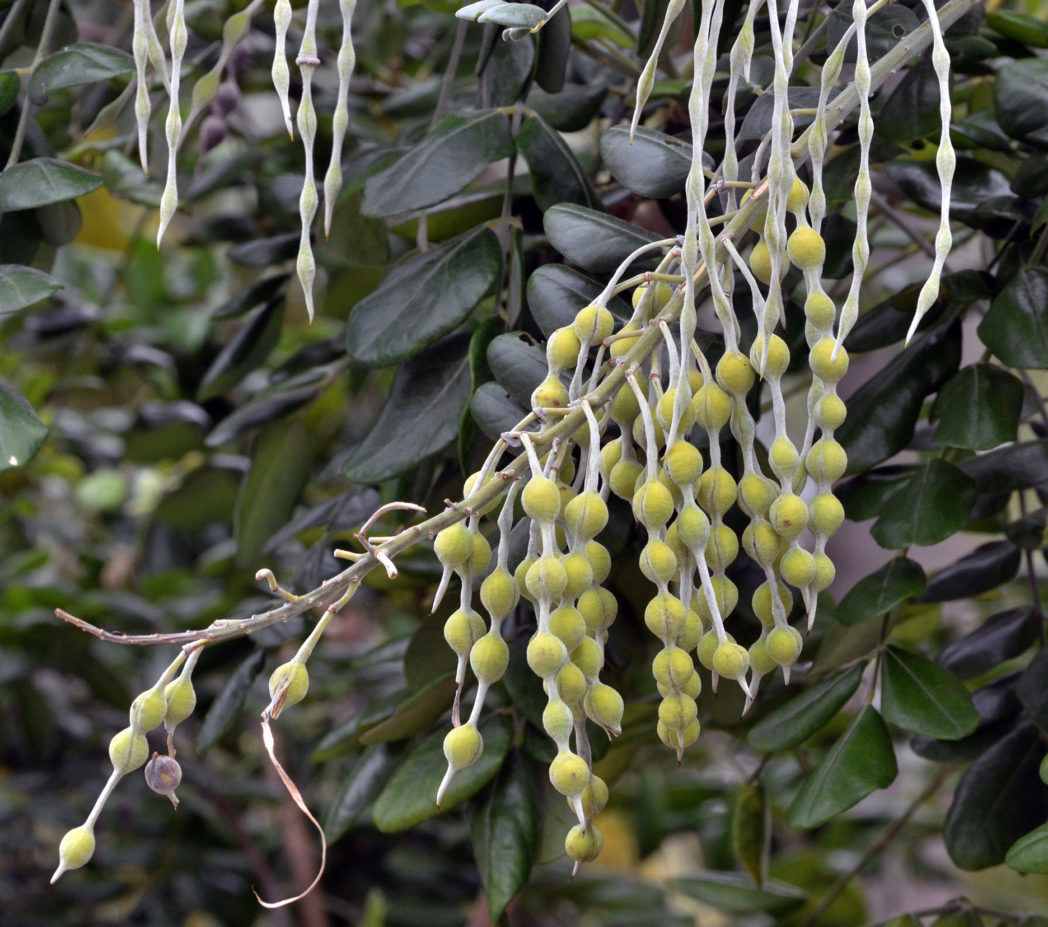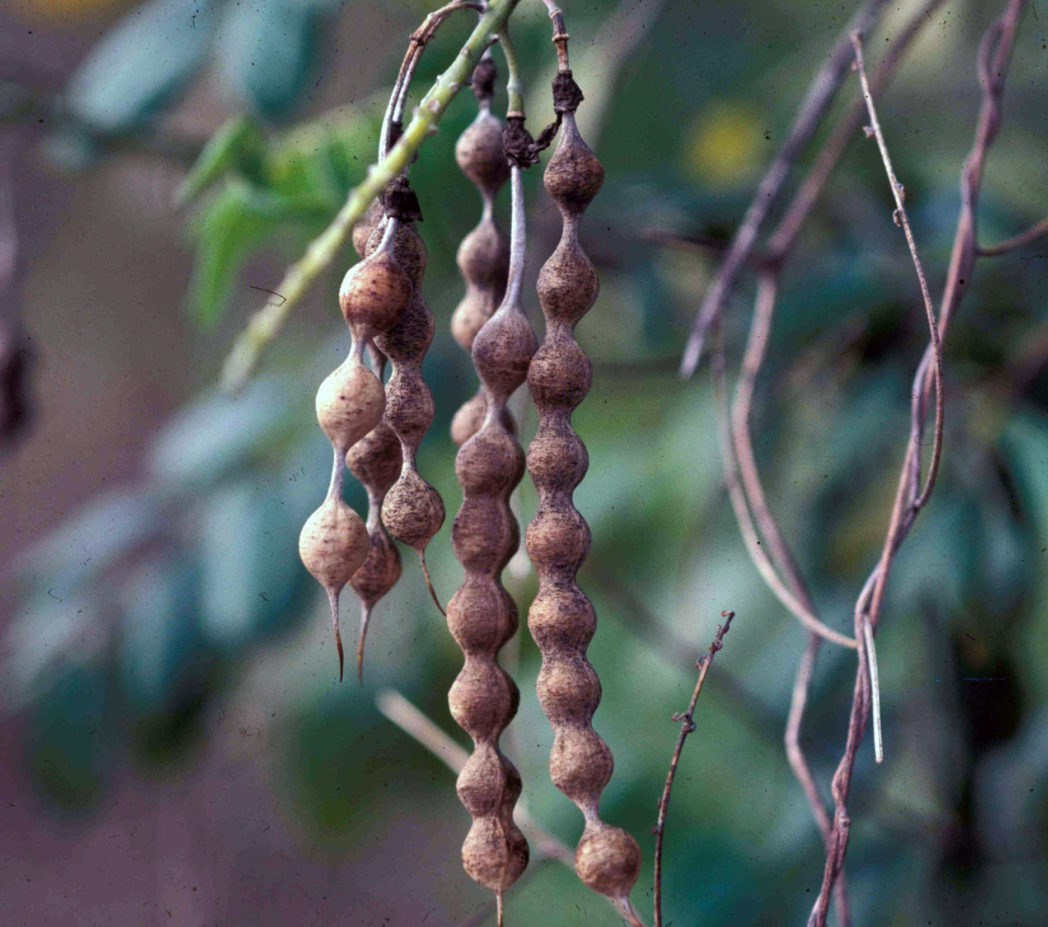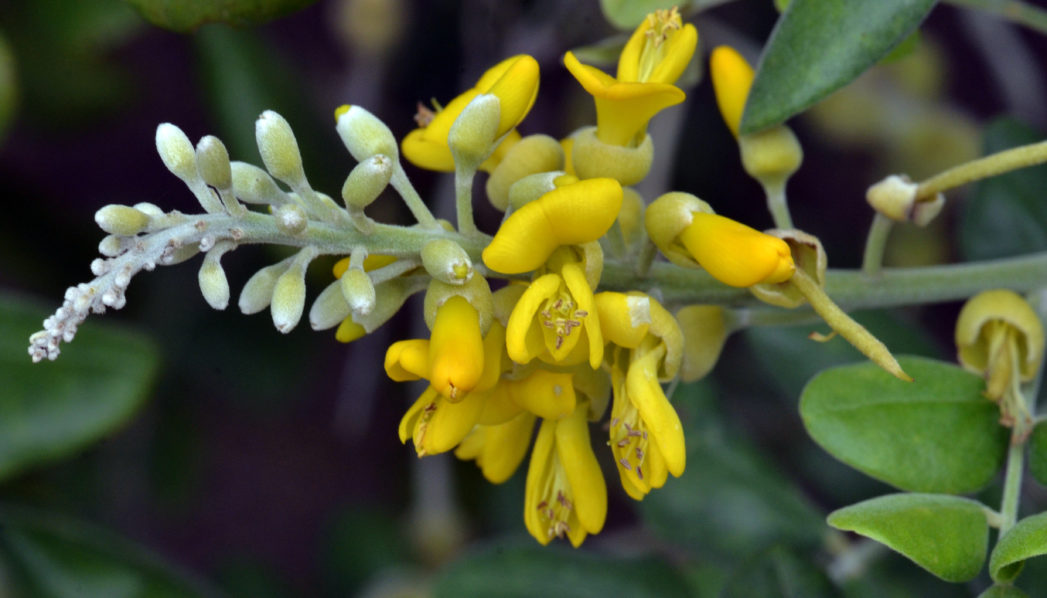Yellow necklacepod
Pictured above: Yellow necklacepod (Sophora tomentosa var. truncata) by Cerlin Ng (CC BY-NC-ND 2.0). Click on terms for botanical definitions. View post as a PDF.
Yellow necklacepod (Sophora tomentosa var. truncata) is a long-lived flowering shrub that occurs naturally in coastal strands, hammocks and dunes throughout Central and South Florida. The flowers, which bloom year-round, attract butterflies, bees, hummingbirds and other small birds. The plant provides food and cover for a variety of wildlife.

Photo by Cerlin Ng (CC BY-NC-ND 2.0)

Photo by Jenny Evans (CC BY-NC 2.0)
Yellow necklacepod’s bright yellow flowers are typical of the pea family — irregularly shaped with a broad upper petal (banner) and two adjacent petals (wings) surrounding fused bottom petals that form a boat-like structure (keel). The flowers are born in long (6–12 inches) terminal racemes. Leaves are pinnately compound and alternately arranged. Leaflets, which number as many as 21 per leaf, are thick, ovate to elliptic and oppositely arranged. Young leaflets (as well as the trunk and stems) are slightly pubescent and may become glabrous as they mature. Fruits are stalked pods up to 6 inches long with severe constrictions around each seed compartment, resembling a beaded necklace (hence the common name). Seeds are round, yellowish-brown and poisonous.
The genus name Sophora is from the Arabic ṣufayrā , meaning “yellow.” The species epithet tomentosa is from the Latin tomentosus, or “furry,” and refers to the hairs that cover most of the plant.
Family: Fabaceae (Legume, pea or bean family)
Native range: Coastal counties of Central and South Florida
To see where natural populations of Yellow necklacepod have been vouchered, visit florida.plantatlas.usf.edu.
Hardiness: Zones 9A–11
Lifespan: Perennial
Soil: Moist, well-drained calcareous or sandy soils
Exposure: Full sun
Growth habit: 4–10’+ tall with 4–8’ spread
Propagation: Seed
Garden tips: Yellow necklacepod is a fast-growing, hardy plant with interesting foliage, flowers and seeds. It does well as a single ornamental specimen or in quantities to form an attractive buffer planting. It is drought- and salt-tolerant, but cannot withstand freezing temperatures.
Caution: Sophora tomentosa var. truncata is often confused with the non-native Sophora tomentosa var. occidentalis, which is often sold in big box garden centers. The latter can be distinguished by the many fine hairs that cover it. The two species can cross-pollinate, so care should be taken to avoid the non-native variety. Both are known by the common name of Yellow necklacepod and both bear poisonous seeds.
Yellow necklacepod plants are available from nurseries that specialize in Florida native plants. Visit www.PlantRealFlorida.org to find a nursery in your area.

